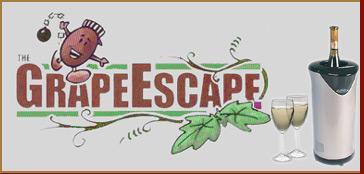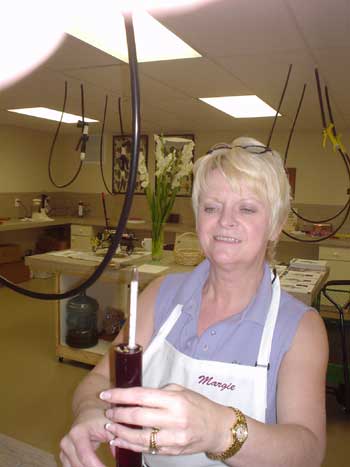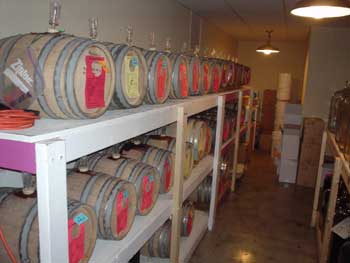| Aroma |
Those odors in wine primarily derived from the grape. |
| Bentonite |
A clay used as a fining agent to achieve heat stabilization or to aid in the removal of other fining agents. |
| Bisulfite |
A source of sulfur dioxide. |
| Bouquet |
Those odors in wine related to processing, such as fermentation, wood aging, bottle aging, etc. |
| Brix |
Value used to express the weight in grams of sucrose dissolved in 100 grams of a solute, such as grape juice. |
| Browning |
Undesirable brownish (amber, tawny, dark yellow) color change in table wine resulting from oxidation. |
| Chaptilization |
Adding sugar to must or juice before fermentation to make up for deficiencies. |
| Concentrate, grape |
Refers to concentrated grape juice, in which the water content has been reduced so that the soluble (dissolved) solids are increased to 68-70 Brix. |
| Dryness |
Term that denotes absence of fermentatable sugar, as in a dry wine; complete fermentation. |
| Esterification |
Combination between the various acids and higher alcohols in the wine to form esters whose fresh fruity aroma appears in the bouquet. |
| Ethanol, ethyl alcohol |
One of the two major products of grape sugar fermentation. |
| Fermentation |
Conversion of grape Sugar by yeast to ethanol and carbon dioxide. |
| Fermentation trap |
The device that allows escape of carbon dioxide gas and prevents entrance of air through the opening of the fermentor. |
| Fermentor |
The vessel used to conduct primary fermentation. |
| Fining agent. |
The addition of various materials that remove certain wine constituents for improved wine quality and stability, such as bentonite, kieselsol, gelatin, etc. |
| Hydrometer |
An instrument used for the measurement of dissolved solids such as sugar or Brix of solutions, such as grape juice or wine. |
| Lees |
The sediment residue of wine fermentation, comprised mostly of spent yeast cells and grape particulate matter. |
| Must |
Crushed grape mixture that contains juice and additives before the addition of yeast. |
| Oxidation |
Process whereby grape juice or wine constituents react with oxygen, resulting in undesirable odor and flavor changes. |
| Polyphenolic |
Naturally occurring compounds in grapes and wine (for example, tannins); important in flavor and involved in many complex wine aging and related reactions. |
| Racking |
The siphoning of clear juice or wine from sedimented solids for maturing and clearing the wine. |
| Sulfur dioxide, SO2 |
An antiseptic for inhibiting spoilage microorganisms in wine making. Also acts as an antioxidant. Used universally as a wine preservative and sanitizing agent. |
| Tannins |
Phenolic compounds naturally occurring in grapes and wine; responsible for astringency and/or bitter flavors in wine. |



